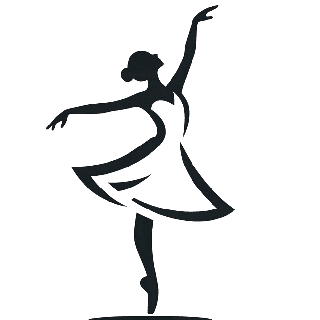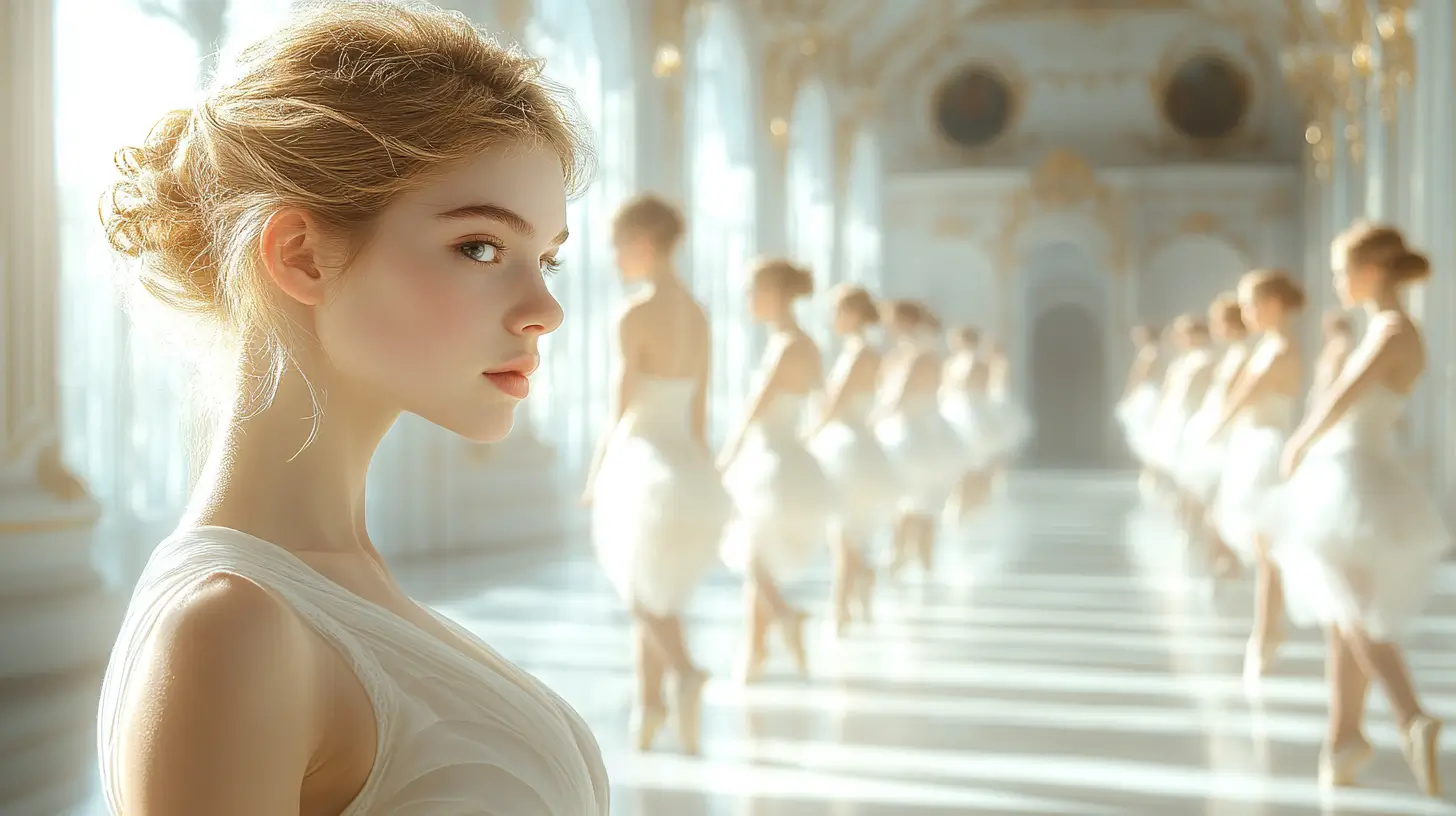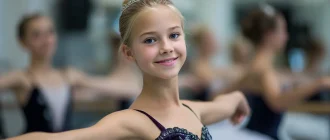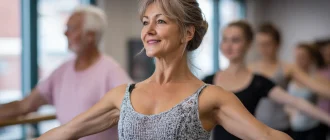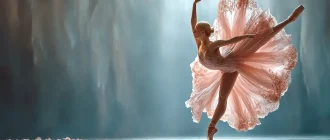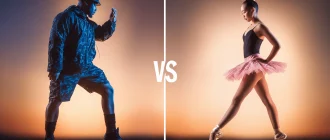Understanding ballet positions is essential for any dancer. These positions form the core of ballet technique, helping to build balance, alignment, and grace. This article will explain the five basic positions, including arms held, and their importance in your ballet journey. Whether you are a beginner or a seasoned ballet fan, mastering these positions is crucial for your progress.
Graceful Insights
- The five basic ballet positions—First, Second, Third, Fourth, and Fifth—serve as the foundation for ballet technique, essential for developing balance, alignment, and artistry.
- Both foot and arm positions are critical for achieving fluidity and grace in ballet, with proper coordination improving stability and overall performance quality.
- Mastering proper technique, alignment, and injury prevention strategies is crucial for dancers to advance their skills and artistic expression.
Art de Podcast
Introduction to Ballet
Ballet is a classical dance form that originated in Italy during the Renaissance and was later refined and developed in France. Known for its technical precision and emphasis on elegance and grace, ballet has become a revered art form worldwide. The five basic positions of the feet and arms are at the heart of classical ballet technique and serve as the foundation for all movements. These positions are essential for executing various jumps, turns, and poses with accuracy and poise.
The fifth position, for example, is a fundamental stance where the feet are turned out and the heels are together, creating a strong base for many advanced movements. Similarly, the third position involves placing one foot in front of the other, helping dancers develop coordination and balance. Mastering these basic positions is crucial for any dancer aspiring to excel in classical ballet, as they provide the structural framework for more complex techniques and artistic expression.
Understanding the Basics of Ballet Positions
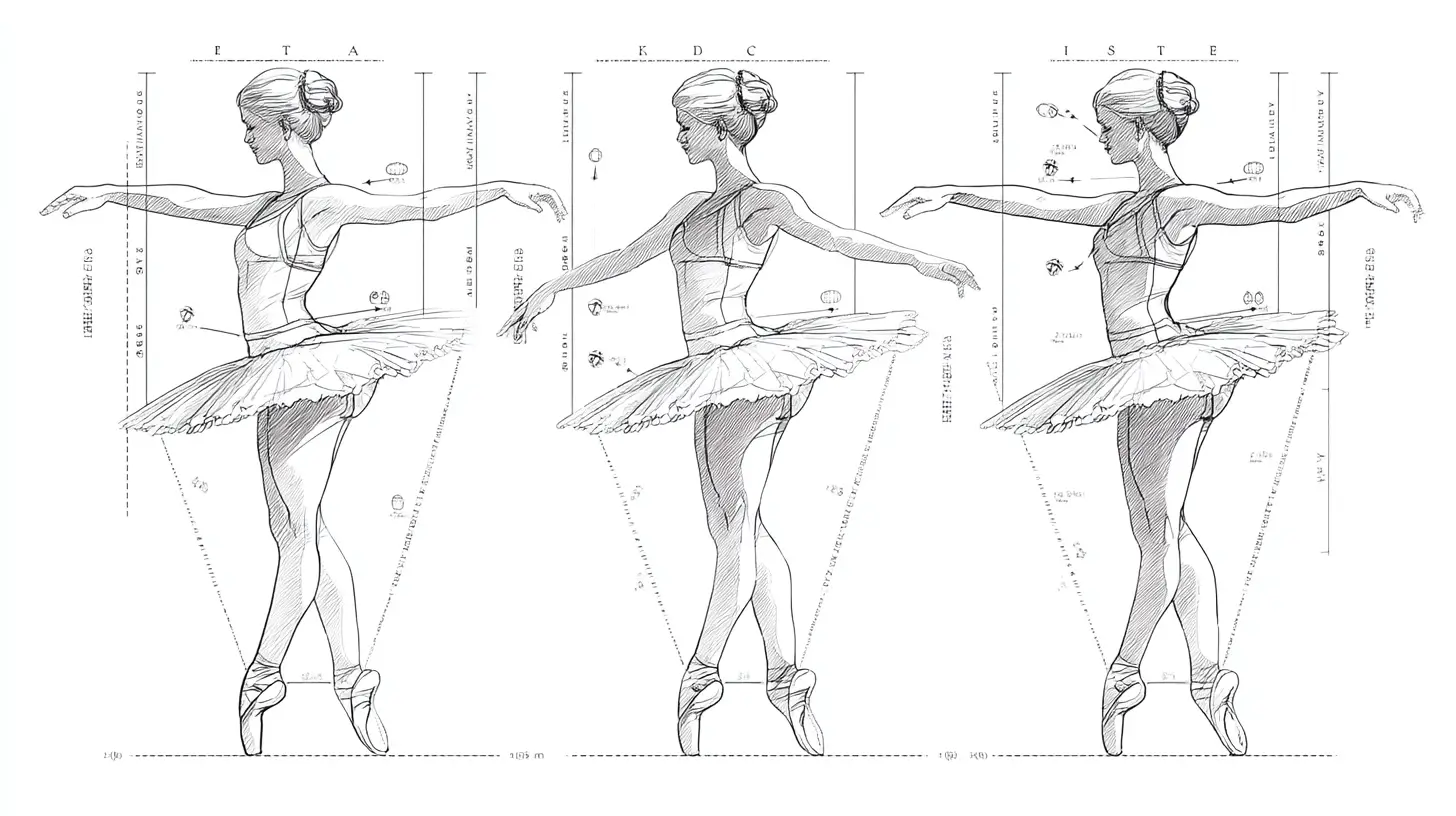
The cornerstone of classical ballet technique is mastering the five basic positions: First, Second, Third, Fourth, and Fifth. These positions form the bedrock upon which all ballet movements are built, especially focusing on the supporting leg. Each position has its unique structure and purpose, offering a framework for developing balance, alignment, and artistry.
Barre exercises are crucial in building strength, balance, and precision in ballet techniques. These foundational movements at the barre help dancers develop the necessary skills for more advanced steps.
Beginners must master these fundamental positions to establish a solid foundation for effective training and confident progression to more complex techniques. While ballet shoes can provide support and aid in balance, they are not strictly necessary for practicing these positions in a ballet company, unlike pointe shoes.
We’ll delve into each of these positions in detail.
First Position
The first position serves as the foundation of all ballet positions. Here, the feet are together with heels touching and toes turned outward, forming a straight line. This stance helps develop balance and turnout, focusing on keeping the knees straight, which is a crucial aspect of ballet technique.
Practicing the first position on demi-pointes helps develop balance and elevation, which are essential for more advanced movements.
Equally important are the arm positions in the first position, where arms are rounded and positioned in front of the body, forming an oval shape aligned with the navel. This alignment helps maintain a graceful and balanced posture, preparing for advanced movements.
Second Position
The second position builds upon the principles of the first, offering greater stability and a wider range of motion. The feet are placed apart, with the heels aligned and the toes turned out, maintaining the same outward rotation. The distance between the heels is about two feet, providing a stable base for various movements, particularly emphasizing the working leg.
Proper leg turnout in the second position relies heavily on the flexibility and mobility of the hip joints, which are crucial for executing large leg lifts and maintaining balance.
In the second position, the arms are extended sideways, slightly rounded, with palms facing forward. This enhances balance and visual harmony, making it popular in classical ballet choreography.
Third Position
The third position is a transitional stance that bridges other positions. Here, one foot is placed in front of the other, with the heel of the front foot touching the arch of the back foot. This alignment develops coordination and balance, essential for intricate ballet steps.
The supporting knee is crucial in maintaining balance and technique in the third position, particularly during movements such as fouettés and ronds de jambe. One arm is rounded in front, while the other arm is extended to the side, enhancing the dancer’s aesthetic appeal and overall posture. The extended legs add to the visual impact, and the leg extension enhances the overall composition.
Fourth Position
The fourth position is more advanced, requiring one foot to be placed in front of the other, separated by a foot’s length. This stance challenges balance and enhances technique, especially when the legs are crossed, preparing dancers for complex movements while maintaining the essential outward rotation.
A bent leg can add stylistic elegance in achieving the desired artistic posture in the fourth position, particularly in movements like the ‘attitude’ where the knee is flexed.
Typically, in the fourth position, one arm is rounded above the head with the other in front of the body, adding elegance and complementing the feet’s alignment.
Fifth Position
The fifth position represents the pinnacle of basic ballet positions, emphasizing correct alignment and balance, whether in the first or fifth. The feet are crossed with one heel touching the toes of the other foot, which is crucial for maintaining stability and executing advanced movements.
A grand plié is essential in warming the ankles, stretching the calves, and maintaining proper alignment in the fifth position.
In the fifth position, both arms are raised above the head in a rounded shape, enhancing the dancer’s form and creating a beautiful visual impact, making it a favorite in performances.
| Position | Feet Description | Arms Description | Notes |
|---|---|---|---|
| First | Heels together, toes turned out, forming a straight line. | Arms rounded and held low before the body, fingers almost touching. | A foundation for many movements. |
| Second | Feet shoulder-width apart, toes turned out. | Arms extended to the sides, slightly rounded, palms facing forward. | Promotes balance and openness. |
| Third | One foot is in front of the other, with the heel touching the arch of the back foot. | One arm is rounded in front (as in the first position), and the other is extended to the side (in the second position). | Less commonly used; transitional. |
| Fourth | One foot is placed approximately 12 inches in front of the other, both turned outward. | One arm is rounded above the head, and the other is extended to the side. | Used in preparation for turns. |
| Fifth | The feet are turned out, with the heel of the front foot touching the toe of the back foot. | Both arms are rounded and held above the head. | Requires significant flexibility and strength. |
Positions of the Body
In ballet, the body’s positions are fundamental to executing various movements and poses with precision and elegance. The five basic positions of the feet are the cornerstone of classical ballet technique:
- First Position: The heels are together, and the toes are turned outward, forming a straight line. This position helps develop balance and turnout.
- Second Position: The feet are placed apart, with the heels aligned and toes turned out, providing a stable base for movements.
- Third Position: One foot is placed in front of the other, with the heel of the front foot touching the arch of the back foot. This position aids in developing coordination.
- Fourth Position: The feet are separated by a foot’s length, with one foot in front of the other and toes turned out. This stance challenges balance and prepares dancers for complex movements.
- Fifth Position: The feet are crossed with one heel touching the toes of the other foot, emphasizing correct alignment and balance.
Equally important are the arm positions, which frame the body and enhance the overall aesthetic. In the first position, the arms are rounded and positioned in front of the body, forming an oval shape. In the second position, the arms are extended sideways with a slight bend at the elbows. Each arm position complements the corresponding foot position, creating a harmonious and visually appealing line.
Arm Positions in Ballet
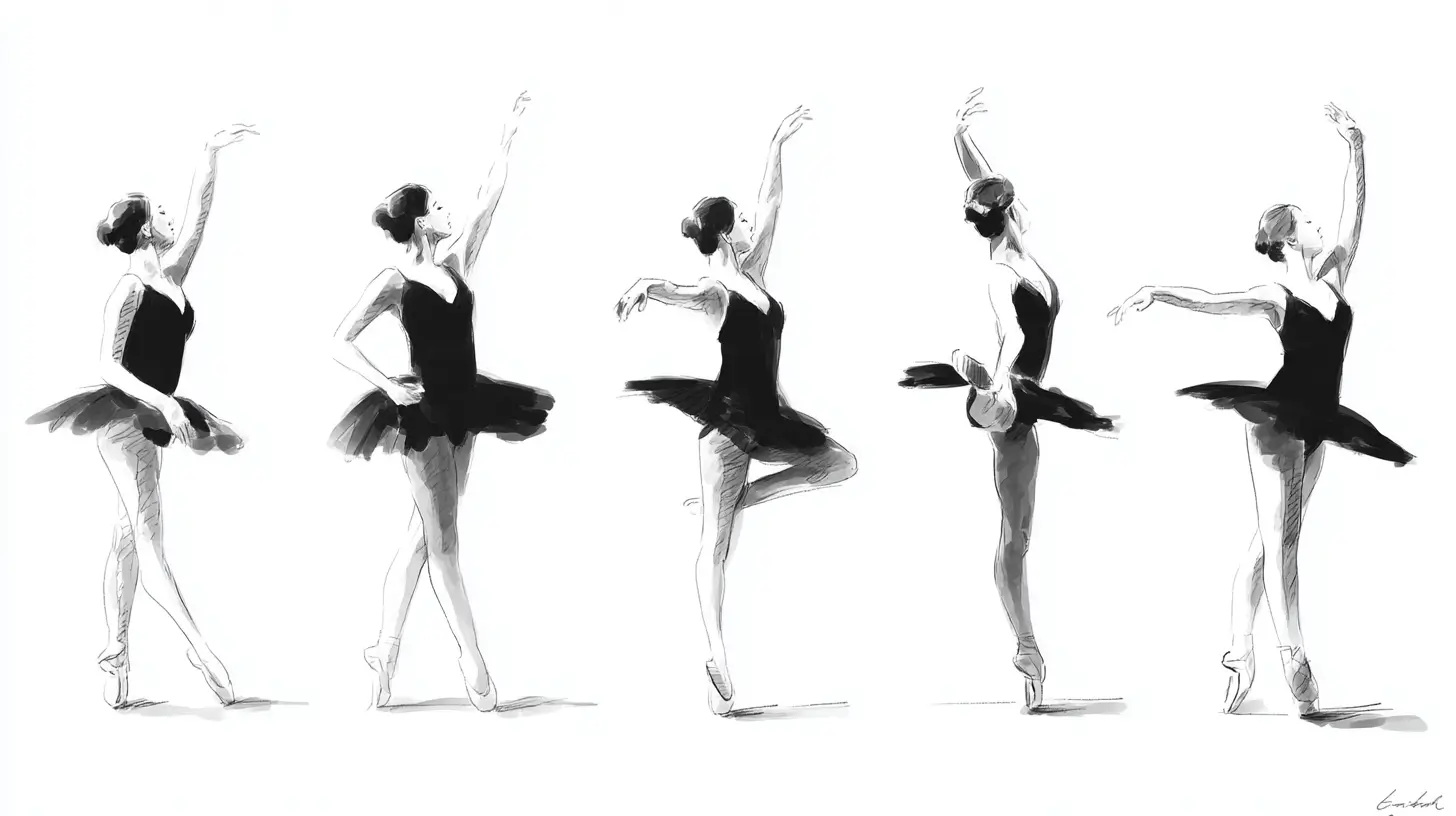
Arm positions in ballet are as crucial as foot positions, significantly contributing to form, balance, and artistic expression. The five basic arm positions complement the foot positions, maintaining the aesthetic quality of a dancer’s performance. Each arm position has a unique structure and purpose, aiding emotional and narrative expression through movement.
The French School places a strong emphasis on distinct vocabulary and technique in arm positions, highlighting the precision and elegance required in ballet.
Mastering these arm positions is essential for excelling in classical ballet. We’ll explore each arm position in detail.
Bras Bas
Bras bas, or “arms low,” is a preparatory position signaling readiness. Here, the arms are placed low, with palms facing each other, creating an elegant stance. Often used at the beginning and end of a dance sequence, it provides a sense of calm and prepares the audience.
The supporting foot maintains balance and readiness in the bras bas position, ensuring the dancer is stable and prepared for the next movement.
Mastering basic arm positions is key for smooth transitions into other arm positions and enhancing the overall fluidity of movements, including port de bras.
First Position Arms
First position arms are fundamental in classical ballet, providing the foundation for upper body alignment and expression. The arms are rounded in front of the body, forming an oval shape aligned with the navel, enhancing the dancer’s silhouette and contributing to balance and poise.
Positioning the disengaged leg, whether crossed in the front or back, is also crucial in maintaining balance and alignment in the first position of the arms.
Mastering the first position arms is crucial for developing proper technique and artistic expression in ballet performances.
Second Position Arms
In the second position, the arms extend sideways with a slight bend at the elbows, and the palms face forward, enhancing balance and overall posture, making it fundamental to ballet technique, such as en avant and en arrière.
Movements en l’air involving the raised working leg further enhance balance and overall posture in the second-place arms.
Proper execution of second position arms à la seconde contributes to stability and control during movements, making it an essential skill for any ballet dancer.
Third Position Arms
The third position involves one arm rounded in front while the other extends to the side, enhancing balance and aesthetic appeal.
The role of the underneath leg is crucial in maintaining balance and technique, especially when transitioning through various ballet positions, including the third position arms.
Mastering third-position arms is essential for achieving fluid movements and enhancing visual harmony in ballet performances.
Fourth Position Arms
In the fourth position, one raised arm is above the head while the other remains rounded in front, adding elegance and grace, creating a beautiful silhouette with one leg raised en croix en l’air.
A ‘tour en l’air’ is a male dancer’s aerial step that involves rising from a demi-plié, executing a complete turn in the air, and landing in a specific position. This movement requires precision and control in the fourth position of the arms.
Mastering the fourth position arms is crucial for executing complex movements with precision and artistry.
Fifth Position Arms
In the fifth position, both arms are rounded and held above the head, forming a complete oval shape that enhances the dancer’s form and creates a harmonious, visually appealing frame.
Incorporating techniques such as ‘sur les pointes’ can further enhance the dancer’s form in the fifth-place arms. For example, in an échappé sur les pointes, a dancer transitions from a closed position to an open position while remaining elevated on the tips of their toes, showcasing skill and control in their technique.
Mastering fifth position arms is essential for achieving high levels of artistic expression and technical precision in ballet.
Combining Foot and Arm Positions
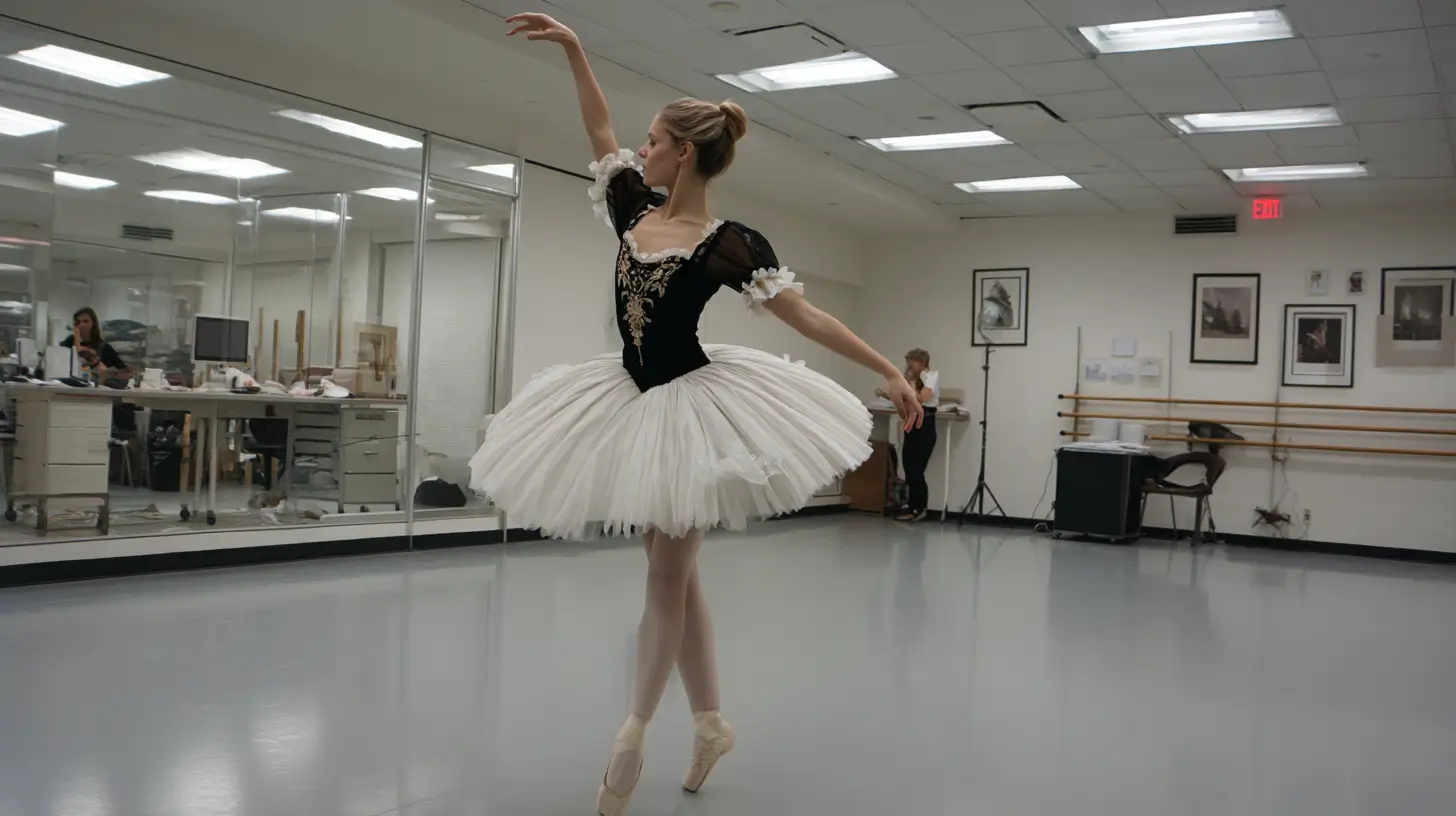
The true beauty of ballet lies in the seamless coordination of foot and arm positions. Synchronizing these elements allows dancers to achieve fluidity and grace in their movements. Proper alignment and positioning improve stability, control, and overall performance quality.
Returning to the same position after a jump is crucial for maintaining precision and control, as it showcases the dancer’s technical skill and ensures the feet land in the exact placement as initiated.
Mastering both foot and arm positions enables dancers to focus on performance and artistic expression rather than technique. We’ll explore some common combinations and practice drills to enhance coordination.
Coordinating Movements
Coordinating foot and arm positions is crucial for fluid and graceful movements. Combinations like pas de bourrée or relevé allow dancers to express musicality and balance during transitions. Practicing drills that focus on these transitions can significantly enhance coordination and fluidity.
Movements performed en avant, such as the sissonne ouverte and grand jeté, also enhance coordination and fluidity by emphasizing dynamic forward motion as part of the choreography.
Mastering foot and arm coordination improves technical skills and enhances artistic expression on stage.
Common Combinations
Pas de bourrée is a fundamental connecting step in ballet, facilitating movement transitions. Combining foot and arm positions creates fluid, elegant movements in routines. Using the pas de bourrée, dancers can smoothly transition between positions, such as first, second, and fifth, thereby enhancing the overall choreography.
Another essential movement is the ‘échappé sur les pointes,’ which involves performing an échappé while fully on the toes. This movement begins with a demi-plié from the fifth position, where the dancer springs into the second or fourth position, ensuring that both knees are straight in the open position. The execution emphasizes balance and precision, with a smooth transition back to the starting position.
Mastering combinations like the pas de bourrée ensures that dancers can perform complex sequences with grace and precision.
Practice Drills
Drills often involve practicing specific sequences focused on maintaining posture while switching between various foot and arm positions. These exercises, including pas de valse, help develop muscle memory and improve coordination over time, enhancing overall performance quality.
In particular, ensuring that the supporting leg straightens during movements like the battement fondu développé is crucial for maintaining balance and control. This technique helps achieve proper leg alignment and strength, which are essential for executing exercises at either 45 or 90 degrees.
Regular practice of these drills is essential for mastering the synchronization of the working foot and arm positions, leading to more fluid and graceful performances.
Advanced Ballet Movements
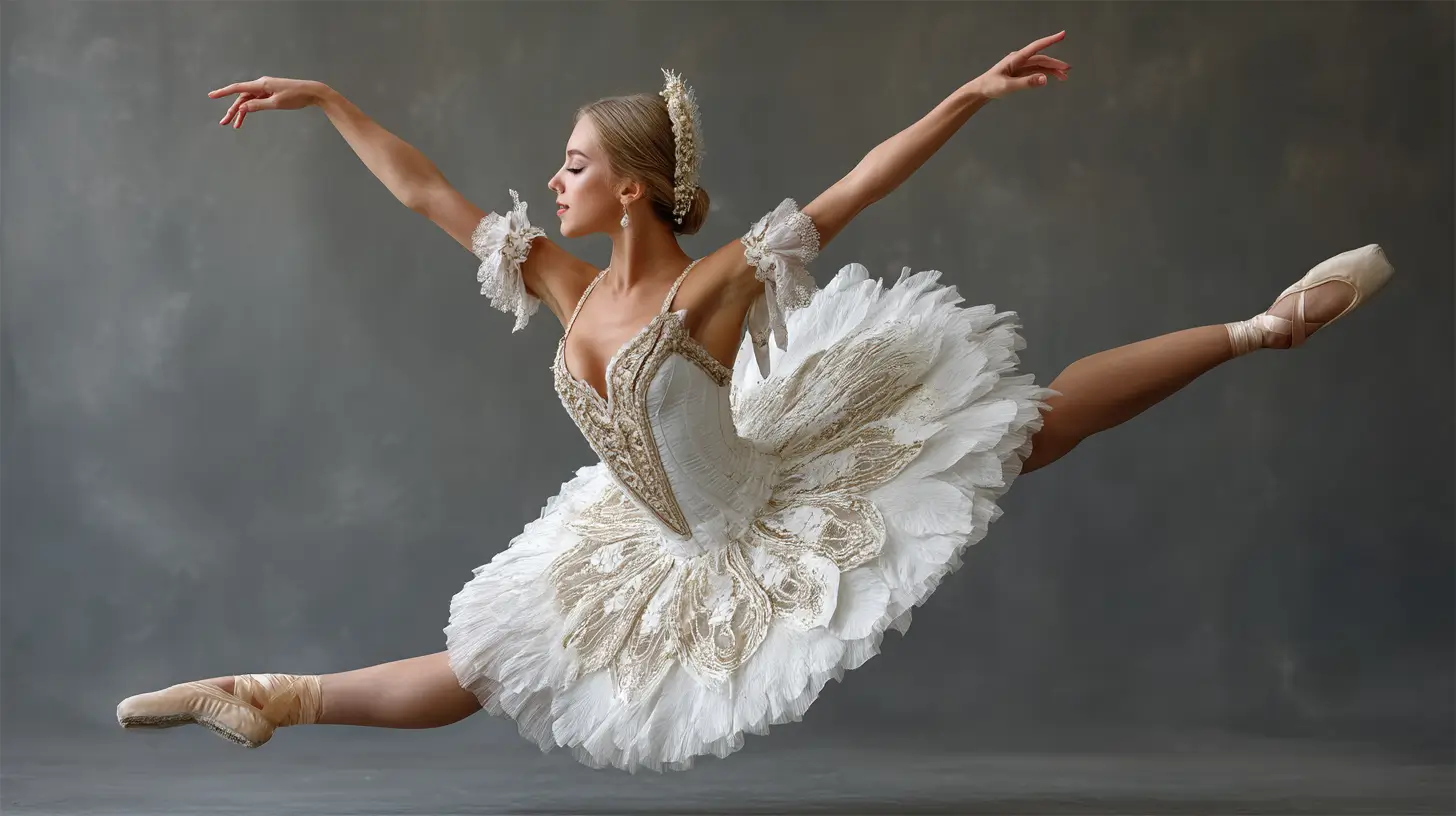
Advanced ballet movements build upon the basic positions and require a strong foundation of technique. Understanding movements such as ballonné, sissonne, and saut de basque is essential for improving a dancer’s skills and performance. These movements challenge the dancers’ strength, balance, and coordination, pushing them to new heights in their ballet journey.
One such complex movement is the coupé jeté en tournant, which involves a coupé dessous leading into a three-quarter turn, followed by a grand jeté en avant. This step is often performed in a series, either en manège or en diagonale, emphasizing its fluidity and technical precision.
Mastering these advanced techniques enhances overall performance quality and artistic expression, enabling dancers to execute complex choreography with grace and precision.
Pirouette
A pirouette en dehors is a whirl or spin, a full turn on one foot, typically executed in two types: turning en dedans (inward) and pirouette en dehors (outward). The execution of a pirouette normally begins with a demi-plié in second position, followed by a spring onto demi-pointe to perform a series of turns, with the arms remaining in second position before closing into first position for completion.
In ballet, ‘en tournant’ is a term used to describe movements that involve rotation, such as in a pirouette. This emphasizes achieving a smooth and controlled rotation during the turn.
To maintain balance during a pirouette, spotting is emphasized, focusing on a single point during the turn to enhance stability and control. Understanding and mastering different types of pirouettes, as well as the spotting technique, are crucial for executing this movement with precision and grace.
Pas de Bourrée
Pas de bourrée is a linking step that involves quick weight changes from foot to foot, characterized by fluid motion and swift weight transfer, which is essential for transitioning between movements. A variation is pas de bourrée couru, a running version featuring small, even steps.
In many ballets, the male dancer plays a crucial role in executing specific movements, such as the pas de bourrée, often showcasing strength and precision.
Mastering the pas de bourrée is fundamental for smooth transitions in choreography, enabling seamless connections between movements and maintaining a consistent performance flow.
Grand Jeté
A grand jeté is a large leap with the legs extended, focusing on height and form. This movement involves jumping from one foot to the other, showcasing a dancer’s height in leaps and highlighting their graceful landing.
Male dancers play a crucial role in showcasing strength and artistry in the grand jeté, emphasizing the technical execution and visual impact of this movement.
The grand jeté’s visual impact relies on proper execution, particularly in terms of height and landing. This movement requires strength, flexibility, and precise technique, making it a performance highlight.
Demi Pointe
Demi pointe is a fundamental position in ballet where the dancer stands on the balls of the feet, with the heels lifted off the ground and the toes pointed. This position requires balance, control, strength, and proper body alignment. Demi pointe is often used in various movements, including jumps and turns, adding an element of elevation and lightness to the dance.
For instance, in a pas de bourrée, the dancer transitions smoothly from one foot to the other while maintaining the demi pointe position, creating a fluid and continuous motion. Practicing demi-pointe helps dancers develop the necessary strength in their feet and ankles, preparing them for more advanced techniques, such as dancing en pointe. Mastering this position is essential for achieving the precision and grace that define classical ballet.
The Importance of Proper Technique
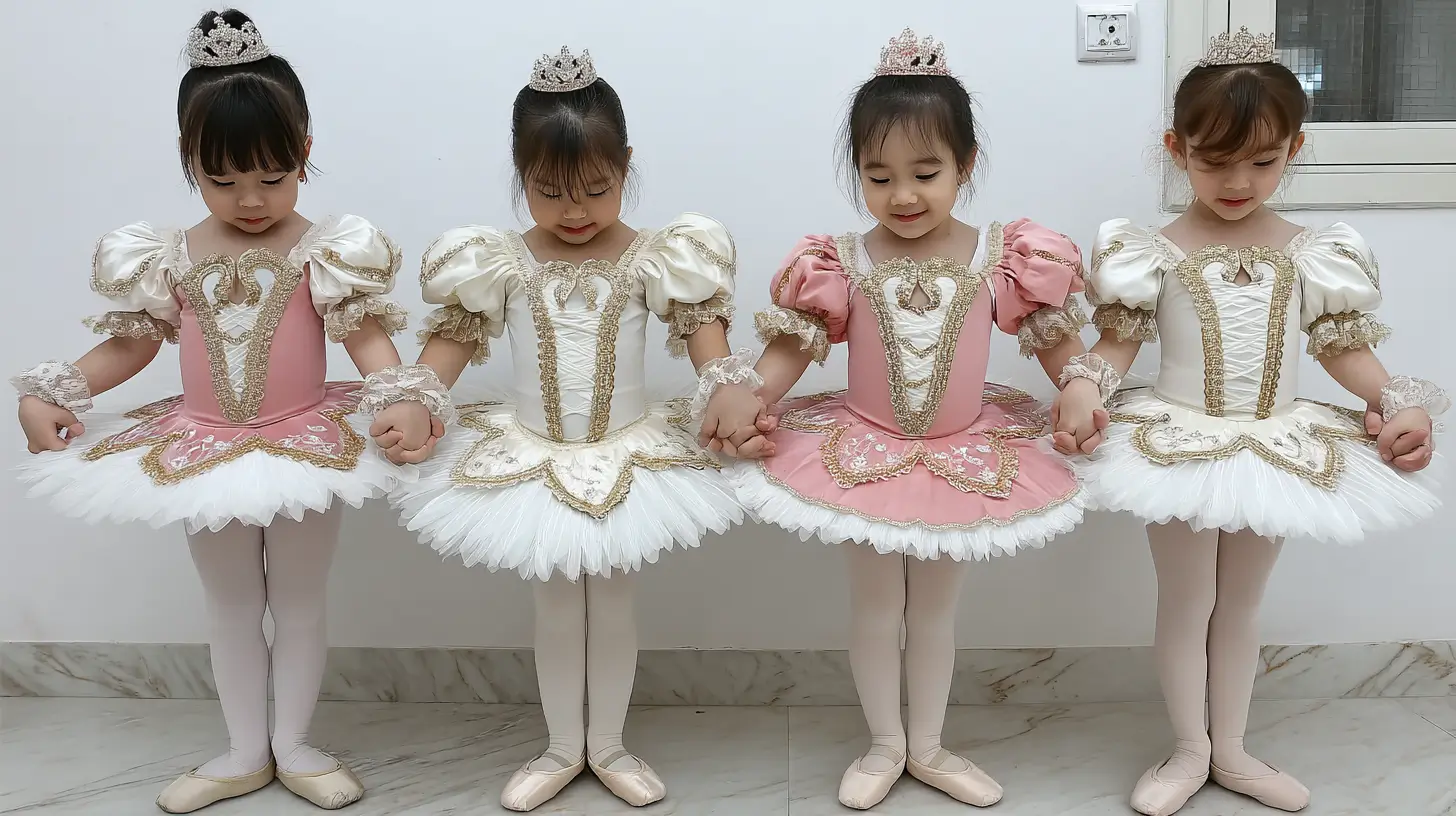
Proper technique forms the backbone of successful ballet dancing. The five foundational positions, developed in the 1600s, are essential for mastering classical ballet. These positions enable complex movements, correct alignment, and prevent injuries. Regular practice of transitions between various positions enhances coordination and performance quality.
French schools have significantly influenced specific techniques and methodologies in ballet, emphasizing precision and elegance in movement.
Executing advanced steps accurately becomes difficult without a solid understanding of the basic positions, which can lead to potential injuries and hinder artistic growth. Mastering these positions, including proper placement of cou de pied, develops strength, flexibility, and balance, forming the bedrock of a dancer’s skill set.
Alignment and Balance
The five basic ballet positions help correct alignment and proper technique. Lifting the ribcage and sternum while stabilizing the pelvis is critical for proper alignment. Rond de jambe à terre, which involves circular leg movements, improves hip flexibility and maintains alignment.
A knee bend is essential for maintaining proper form and technique, especially in poses like ‘attitude’ and ‘polonaise,’ which are crucial for achieving the desired artistic posture and stability during performance.
Proper alignment and balance are crucial for executing movements with precision and grace, ensuring a straight line and stability essential for advanced techniques and overall performance quality.
Injury Prevention
Proper technique minimizes the risk of injuries related to incorrect form. A solid grasp of basic positions helps avoid harmful habits that can lead to long-term damage. Focusing on correct alignment and positioning ensures longevity in the art form.
One key aspect of proper alignment is ensuring that the supporting leg straightens during movements like the battement fondu développé. This technique is crucial for maintaining balance and control, which helps prevent injuries.
Preventing injuries is crucial for a dancer’s health and ability to continue developing skills and achieving full potential in ballet.
Artistic Expression
Mastering foundational positions is crucial as they form the basis for all ballet technique and artistic expression. Arm positions are pivotal in creating aesthetically pleasing formations, enhancing performance quality. Combining various foot and arm movements enables dancers to express emotions and narratives, resulting in more engaging performances.
One such movement is the ‘pas de chat,’ a sideways jump that involves bending the legs in the air while crossing them at the knees, resembling a cat’s leap. This jump enhances the aesthetic quality of a performance and is featured in well-known ballet pieces, such as the Dance of the Cygnets from Swan Lake.
Proper technique ensures longevity and control in performances, enabling dancers to utilize their creativity and expressiveness fully. This mastery transforms technical precision into art, captivating audiences with skill and emotion.
Ballet and Emotion
Ballet is a technical dance form and a deeply expressive art form that conveys emotion and tells a story through movement. Dancers utilize their bodies, facial expressions, and arm movements to express feelings and narratives, captivating their audiences with their performances. The port de bras, or carriage of the arms, plays a crucial role in framing the body and creating a beautiful line, enhancing the emotional impact of the dance.
Pointe shoes, which allow dancers to perform en pointe, add elegance and expressiveness. In a pas de deux, the male dancer’s step often supports and lifts the female dancer, symbolizing trust and partnership. The corps de ballet, or group of dancers, works together in unison to create a cohesive and harmonious performance, often enhancing the storytelling aspect of the dance.
Ballet’s ability to convey complex emotions and stories through movement makes it a unique and powerful art form. Whether performing a dramatic pas de deux or a synchronized ensemble piece, dancers use their technical skills and artistic expression to bring the choreography to life, leaving a lasting impression on their audience.
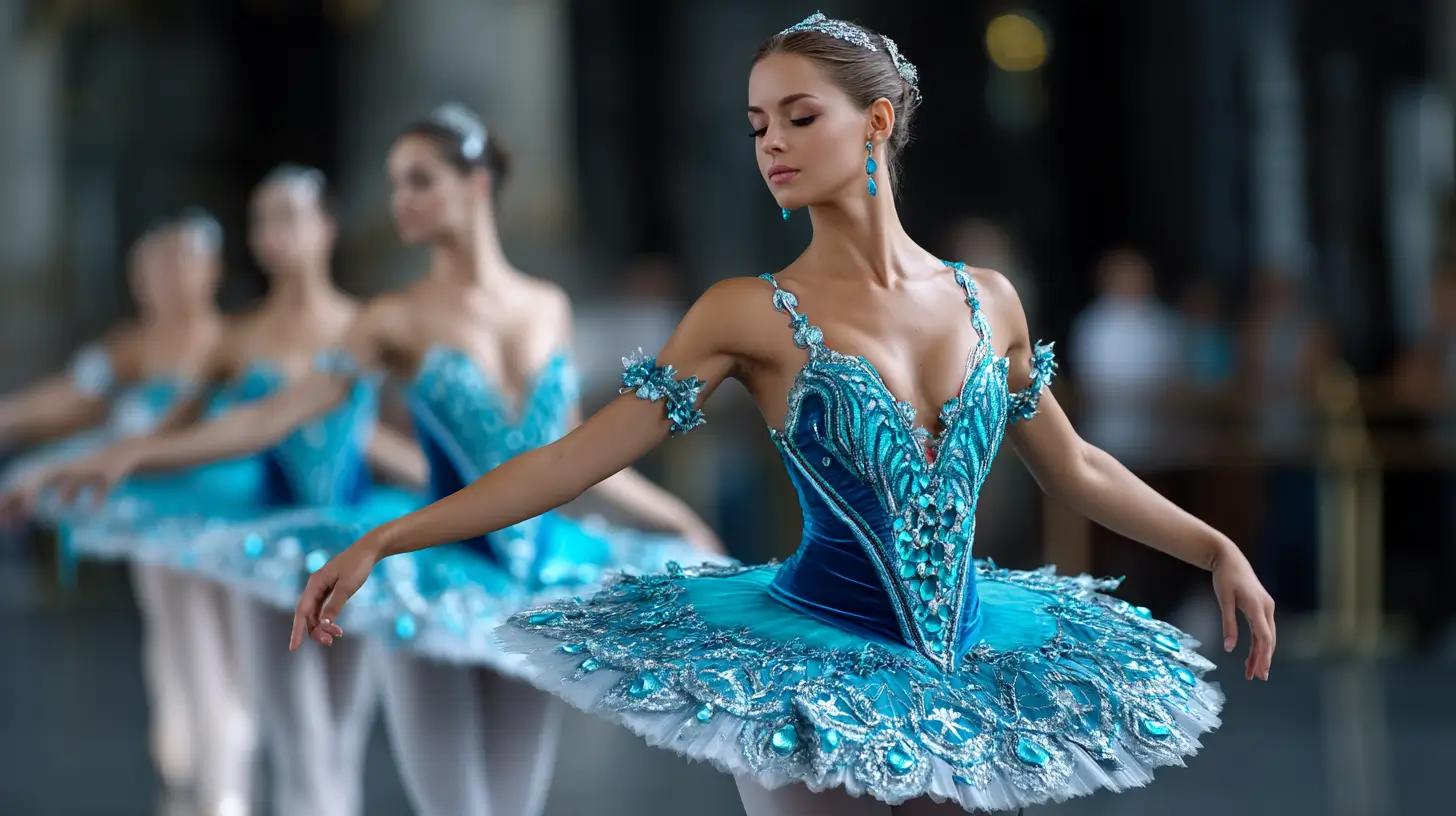
Resume
In summary, mastering the five basic positions in ballet is essential for any dancer looking to excel in this art form. These positions provide the foundation for balance, alignment, and fluidity in movements, allowing dancers to progress confidently to more complex techniques. Understanding and perfecting arm positions enhances a dancer’s form, balance, and artistic expression.
Mastering the ‘male dancer’s step’ is also crucial for achieving technical precision and artistic expression, especially in movements that highlight male dancers’ unique physicality and performance style.
Proper technique is crucial for executing advanced movements, preventing injuries, and ensuring a dancer’s longevity in ballet. By seamlessly combining foot and arm positions, dancers can create graceful and captivating performances that showcase their skill and artistry. Embrace the discipline and beauty of ballet, and let these foundational positions guide you to new heights in your dancing journey.
Frequently Asked Questions
Why are the five basic ballet positions important?
The five basic ballet positions are crucial as they establish the foundation for all ballet movements, ensuring proper alignment, balance, and technique for progressing to more advanced steps. Mastery of these positions, particularly the second and fourth, is essential in developing a strong ballet practice.
The hip joints play a vital role in maintaining proper leg turnout and alignment in these positions, facilitating the execution of movements with precision and grace.
What role do arm positions play in ballet?
Arm positions are crucial in ballet, as they enhance form and balance, thereby improving the dancer’s presentation and artistic expression.
The ‘disengaged leg’ plays a crucial role in maintaining balance and alignment in arm positions, especially when the leg is positioned at an oblique angle to the audience during the épaulement technique.
How does mastering basic positions help prevent injuries?
Mastering basic positions significantly reduces the risk of injuries by ensuring proper technique and alignment, which helps prevent incorrect form and the development of harmful habits. Consequently, this focus on fundamentals promotes overall safety in physical activities.
Maintaining a bent supporting knee is crucial for proper form and technique, especially in movements like fouettés and ronds de jambe, to prevent injuries.
What is the significance of coordinating foot and arm positions?
Coordinating foot and arm positions is significant as it enhances fluidity and grace in movement, improving stability, control, and overall performance quality.
In ballet, the term ‘en tournant’ describes movements that involve rotation while executing specific steps, such as ‘coupé jeté en tournant’ and ‘fouetté en tournant’. This rotational aspect is crucial for achieving the desired fluidity and grace.
What are some advanced ballet movements that build on basic positions?
Advanced ballet movements, such as pirouettes, pas de bourrée, and grand jeté, are essential for dancers looking to progress, as they build upon the foundational techniques established in basic positions. Mastering these movements enhances both technical skill and artistic expression.
Movements performed en avant, such as the sissonne ouverte and grand jeté, build on these basic positions and enhance the overall choreography by emphasizing dynamic forward motion.
What is turnout, and why is it essential in all ballet foot positions?
Turnout is the external rotation of the legs from the hip joints, engaging the deep outward rotator muscles to protect the knees and ankles. Proper turnout creates the clean lines and stability fundamental to all ballet technique, allowing for a greater range of motion.
How do foot positions influence a dancer’s alignment and balance?
Each foot position sets the dancer’s base of support. A dancer maintains balance, reduces joint strains, and facilitates smooth, controlled movement by centering the weight evenly and aligning the hips over the feet.
What distinguishes the third position from the fifth position in ballet?
In third position, the front foot’s heel rests near the back foot’s arch, creating a moderate turnout stance. In fifth position, the feet are fully crossed so that each foot’s heel touches the other’s arch, producing the most compact and turned-out base.
How should beginners work on achieving a proper first position?
Beginners should practice at the barre with heels together and toes turned out, maintaining a comfortable position. Focusing on core engagement, maintaining a level pelvis, and gradually increasing turnout over time helps develop strength and flexibility without risking injury.
Why is proper weight distribution important in the second position?
The second position requires the feet to be spaced wider than hip-width apart, with the toes turned out. Even weight distribution across both feet ensures stability, prevents leaning into one leg, and supports fluid lateral movements.
What are the common mistakes when moving into the fourth position?
Common errors include uneven weight placement (often too much on the back leg), incorrect spacing (too narrow or too wide), and misaligned hips. These issues can compromise turnout, balance, and the aesthetic line of the position.
How do arm positions complement the five basic ballet foot positions?
Arm positions, known as port de bras, frame the body’s line and aid balance. For example, the first arm position often accompanies the first foot position to create a symmetrical shape, while different arm placements help counterbalance shifts in weight during transitions.
What exercises can help improve flexibility for high turnout?
Exercises such as side-lying clamshells with a resistance band, hip rotations in a pike position, plié variations focusing on pressing the pinkie-toe side into a wall, and frog-like hip openers strengthen the external rotators and increase hip flexibility.
How do body positions like croisé and effacé relate to foot placements?
Body positions such as croisé and effacé describe the orientation of the torso in relation to the audience and correspond to specific foot placements. For instance, in croisé devant, the front leg and torso align on the same diagonal, with the feet in either fourth or fifth position.
Why is the concept of “pulling up” critical in ballet positions?
“Pulling up” refers to engaging the core, lengthening the spine, and lifting the ribcage without raising the shoulders. This action creates a lifted, elongated posture that underpins stability and precision in all positions.
How do advanced positions differ from the basic five positions?
Beyond the five classical foot positions, choreographers like Serge Lifar introduced sixth and seventh positions (turned-in variants), and different schools codify additional body orientations. These advanced positions expand the vocabulary but are used selectively.
What is the difference between the closed and open?
In the open fourth position, the heels of both feet are aligned on the same vertical plane, with one foot in front of the other. In a closed fourth, the heel of the front foot aligns with the toes of the back foot, creating a more crossed placement.
How can dancers prevent injury when practicing turnout?
To prevent injury, dancers should never force turnout beyond hip rotation. They should always warm up thoroughly, strengthen the hip rotators and core, and maintain proper knee-over-toe alignment. Listening to the body and progressing gradually is key.
Do different ballet methods have variations in the body positions?
Yes. Cecchetti, Vaganova, and the Royal Academy of Dance describe eight to eleven body positions (croisé, effacé, à la seconde, etc.) with arm and torso placement variations that complement foot positions and stylistic preferences.
How does pointe technique affect foot positioning?
Pointe work requires dancers to fully extend and strengthen their feet and ankles, aligning their weight over the tips of their toes. Proper foot positioning en pointe demands excellent turnout, strong arches, and precise alignment to ensure balance and safety.
